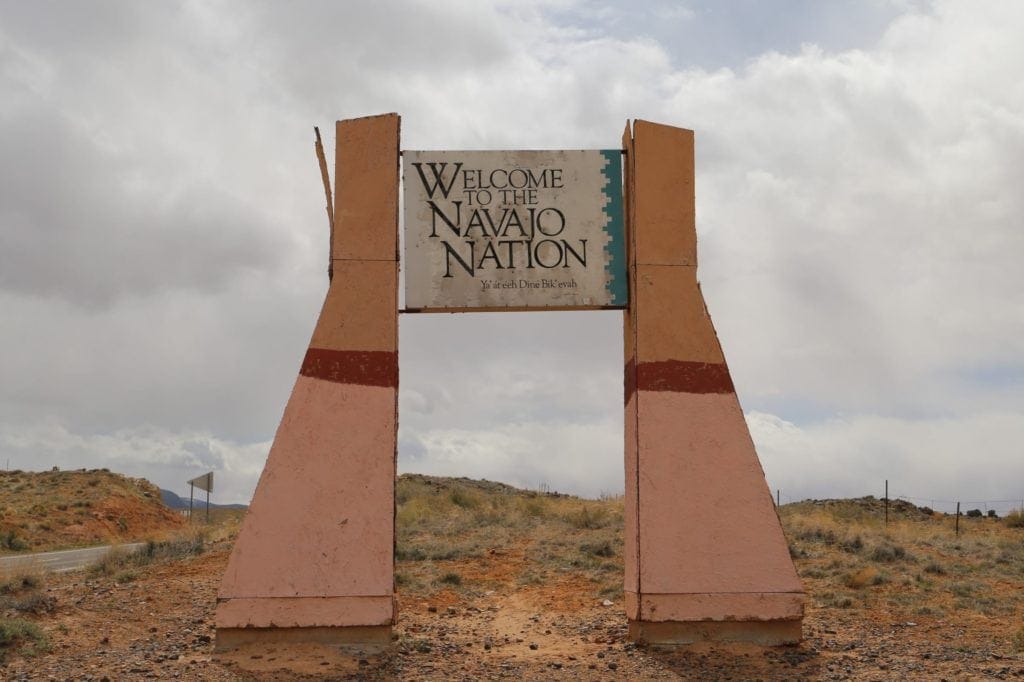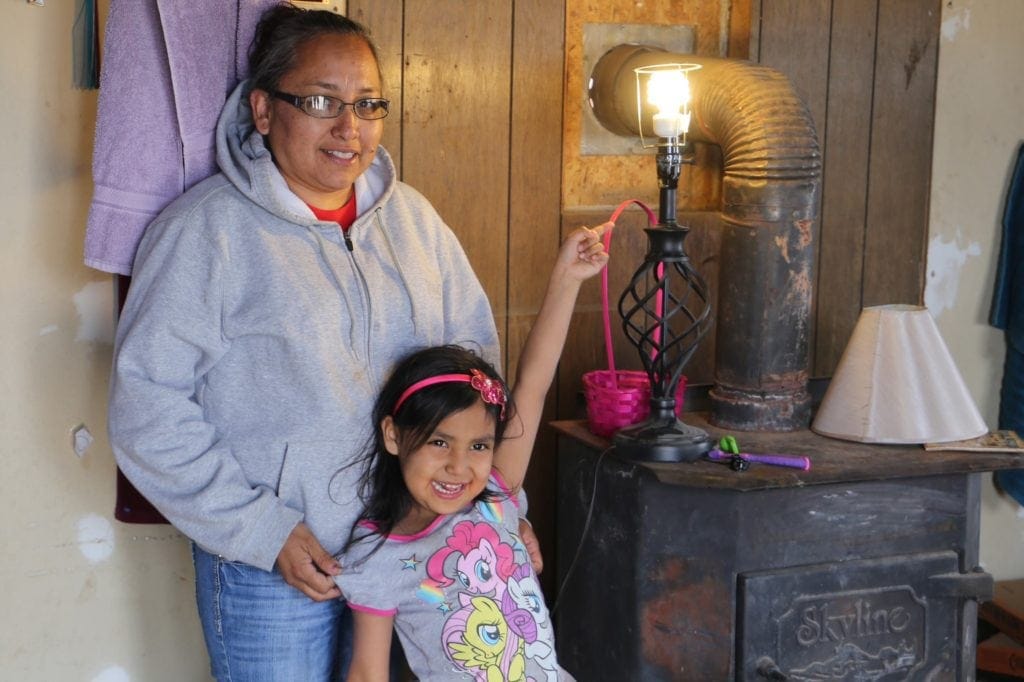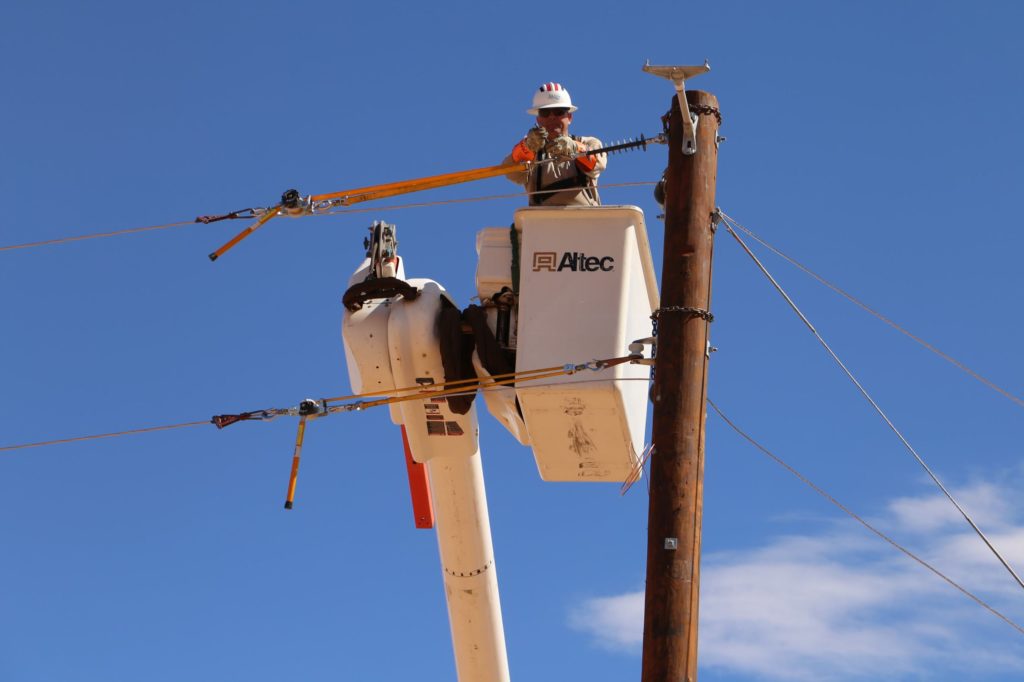The Light Up Navajo project
By Paula Aven Gladych
For Huskie Tools
Linemen are some of the first responders to arrive when tornados, hurricanes, blizzards and other major storm events hit and bring down the power. That’s why, when the power industry found out that the Navajo Nation still has 15,000 homes without power, they wanted to leap into action immediately.
The American Public Power Association, which represents municipal utilities across the country, has made it its mission to help get power to these families, who live on 27,000 acres in New Mexico, Arizona and Utah.

The organization has always rounded up volunteer linemen to help restore power after major storm events across the U.S. and in U.S. territories like Puerto Rico, Guam, U.S. Virgin Islands, American Samoa and the Mariana Islands, but the association was shocked that so many families could be living without power in the heart of the United States.
“The message was harsh for a lot of us to hear. We think being without power for a few days is bad. Hearing about people who have never had electricity, 15,000 of them, that was frustrating for us,” says Mike Hyland, senior vice president of engineering services for the APPA.
The nonprofit, in partnership with the Navajo Tribal Utility Authority, started the Light Up Navajo project to find a way to help get power to these people faster. Because of the remote location of some of these homes, and the high altitude – between 6,000 and 7,000 feet above sea level– it estimated it would cost about $1 billion to electrify all of these homes. That includes dropping in new poles, stringing lines, hooking up transformers and meters. Some of the houses the Navajo live in were never wired for power, so that has to be completed as well.
Hyland says that once the linemen from the APPA’s member utilities heard about the project, they were lining up to volunteer their services. The APPA and NTUA recently completed a pilot project on the reservation where more than 130 linemen from 27 different municipalities worked hand-in-hand with linemen from the Navajo Tribal Power Authority to install 42 miles of new line. Between April and May they connected 233 families that were not getting power.
“It doesn’t seem like much,” says Hyland, “but how do you eat an elephant? One bite at a time. This is the first bite. We learned a lot.”

Part of the project was paid for through a $125,000 APPA Demonstration of Energy & Efficiency Development or DEED grant. The utilities that participated in the pilot program paid the salaries of their volunteer linemen and other organizations donated $1.8 million in materials.
“These hogans, they don’t have electricity inside. They weren’t wired for electricity so electricians had to wire up a fuse box. Some structures were not strong enough for a meter so we had to add a metering pole,” Hyland says.
The pilot project got its start last September when 70 individuals from 40 different utilities flew out to the Navajo Nation to do a scouting mission. They asked important questions like where would the linemen sleep, how could they keep their tools secure and where would they get food in the middle of nowhere. The pilot was six weeks long and the organizations plan to meet this summer to discuss what went right and what could have been done better. They hope to come up with standard operating procedures so that other organizations can duplicate this effort in the future. They also are searching for sponsors to help defray the cost of materials.
The pilot project was a life changer for the families who were lucky enough to be included, Hyland says.
“Now their kids don’t have to study by kerosene lamp or think about what it would be like to eat a popsicle. Rather than having a cooler and getting ice constantly, now they can have a refrigerator and a couple of light bulbs,” he says.
He adds that “although we’re really happy with 233 families getting electricity, we are more enlightened of the challenges.”

The people on the reservation were wonderful. Hyland points out that the Navajos are “unbelievable Americans” who helped the U.S. win World War II and yet many of those veterans are still waiting for electricity.
“The linemen here, they just wanted to jump in the truck and go. They just want to get out there and git er done,” he says. The pilot project started with a safety, construction and cultural orientations. In the end, the biggest complaint from the linemen was that they had to spend too much time in a classroom when they just wanted to get out there and work additional hours.
“If we could have hooked up one more customer it would have made them happy. That’s their mentality and it is a great mentality,” he says.

The Navajo linemen were “top notch, particular and hard working. They were giving up a lot of time to spend with these outside crews and teach them Navajo ways,” Hyland adds.
The APPA will tell its story at the annual Department of Energy and Bureau of Indian Affairs conference that happens each fall. Hyland says the organization is hoping to duplicate the Light Up Navajo project in other areas, including in Alaska, where many Inuit don’t have power.
“We need more fundraising to get more materials. It is not cheap, but when people hear the story, they are willing to chip in,” he says.
The APPA and NTUA have not even scratched the surface outside the public power industry. The organizations have heard from retirees, independent contractors and customers who have offered to volunteer their time.
The best part about helping these Navajo families get power was the joy they expressed at finally having access to power.
Families celebrated by offering linemen home-cooked meals. Many shed tears of joy. The kids were excited.
The NTUA wires about 487 homes a year. Since its current general manager Walter Haase took over, about 4,800 unserved homes have been wired for power. Haase has said he won’t retire until all of the 15,000 Navajo families have power.
“He’s either going to be there a long time, or we need to pick it up,” says Hyland. “We did close to 700 or 800 houses this year alone. If you average that straight for another 10 years, that’s 8,000. We’re not there yet. We don’t want it to take 20 years so we keep spreading the word.”

